Report on the UNSW Visit to Qingdao/Rizhao and Transformation of Urban Ports and Harbours (TUPAH) Workshop 17-19 October 2016
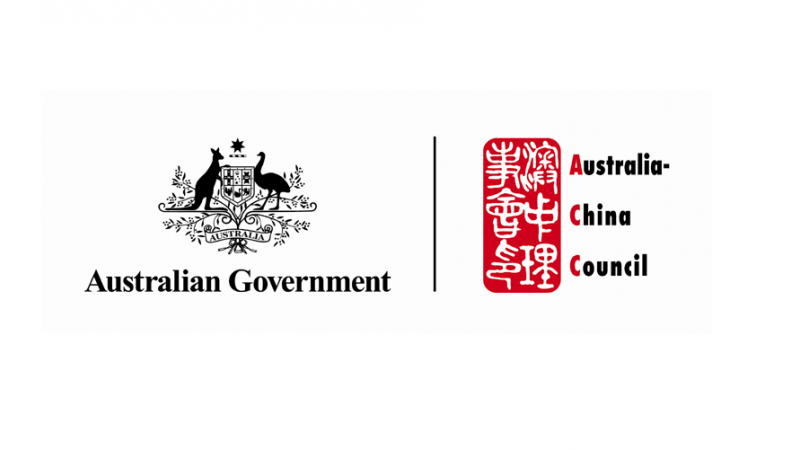
Report on the UNSW Visit to Qingdao/Rizhao and
Transformation of Urban Ports and Harbours (TUPAH) Workshop 17-19 October 2016
17 October
RobotFish MoU
The UNSW delegation travelled to RobotFish by bus and was welcome by Maria Ma CEO of RobotFish before an MoU was signed between UNSW and Robotfish. Mr Warwick Dawson, Director, Research Strategy and Partnerships Office introduced Robotfish to the Torch Innovation Precinct at UNSW and received a brief tour of RobotFish campus.
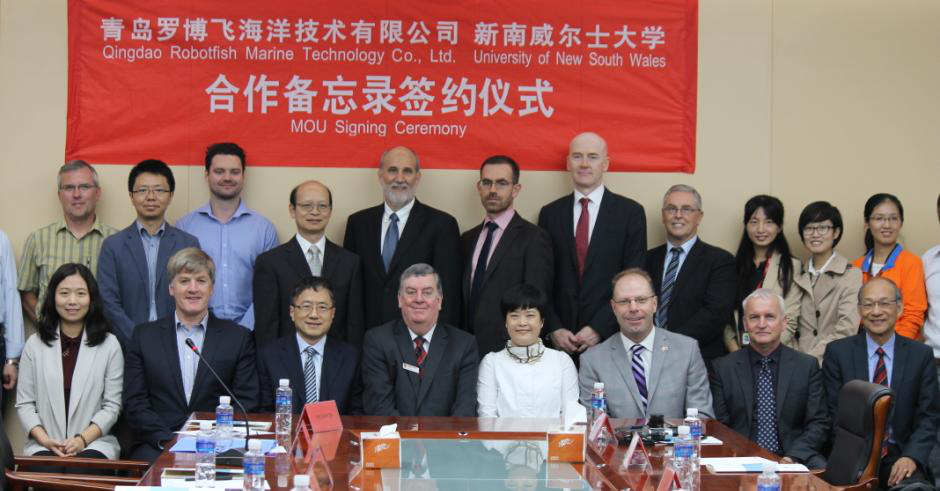
Qingdao National Laboratory of Marine science & Technology
The delegation visited the nearby Qingdao National Laboratory of Marine Science and Technology. Deputy Director of QNLM provided a brief introduction to QNLM. The Torch Innovation Precinct at UNSW was introduced using a video and discussion by Mr Warwick Dawson, Director, Research Strategy and Partnerships Office. A group photo and a brief tour of the campus followed.
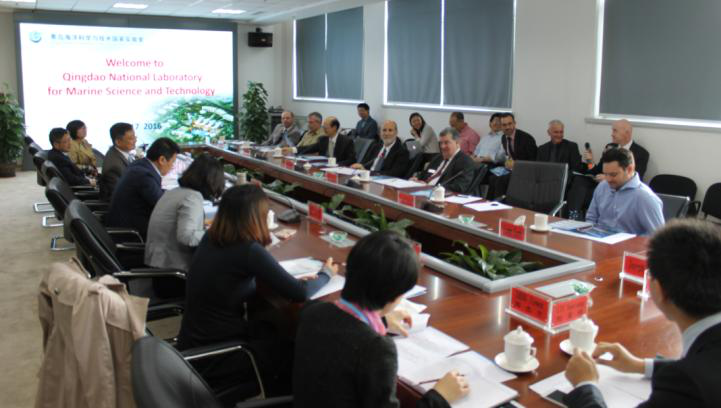
UNSW-OUC research student and academic collaboration
At a meeting at OUC Laoshan campus, the UNSW Canberra Associate Dean International Joseph Lai discussed with OUC SHI Hongda Dean of GRS and Dean of Engineering the UNSW-OUC collaboration. OUC SHI Hongda Dean of GRS suggested UNSW should make studying at UNSW more attractive to students and mentioned a slight expansion in CSC scholarships.
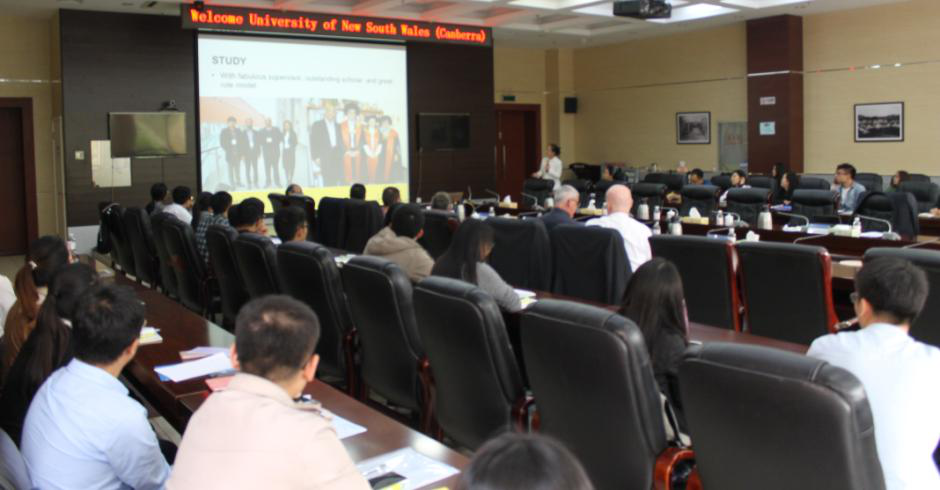
UNSW/TUPAH group site visit to Aoshan Bay
The UNSW/TUPAH group led by A/Prof Xiao Hua Wang visited the newly developing Aoshan Bay for a site visit and discussion with the Oceantec Valley for TUPAH collaboration before a dinner hosted by Robotfish.
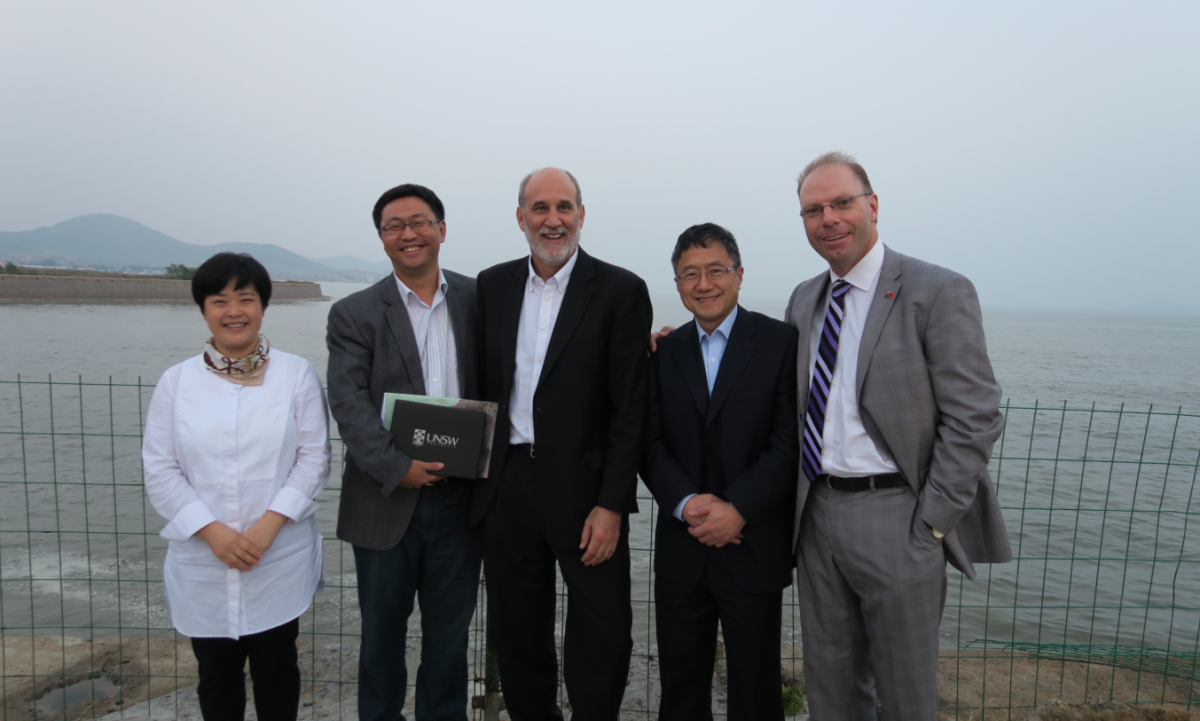
18 Oct Rizhao Port
The TUPAH group travelled to Rizhao by bus for a field visit to Rizhao Port. Xianlei KONG, Vice Chairman, Rizhao Port hosted the visit. A/Prof Wang introduced the team and Warwick Dawson showed a promotional Torch UNSW video. Richard, Warwick and Kong agreed to talk further. There was discussion about eco-compensation and the payments made to Ocean and Fisheries Bureau that spends the money. A proposed project for the second step is under development UNSW signed an MOU with Rizhao Port Vice Chairman Xianlei Kong. Over a formal lunch SARCCM Director Xiao Hua Wang (UNSW Canberra) expressed best wish for collaboration between UNSW and Rizhao Port.
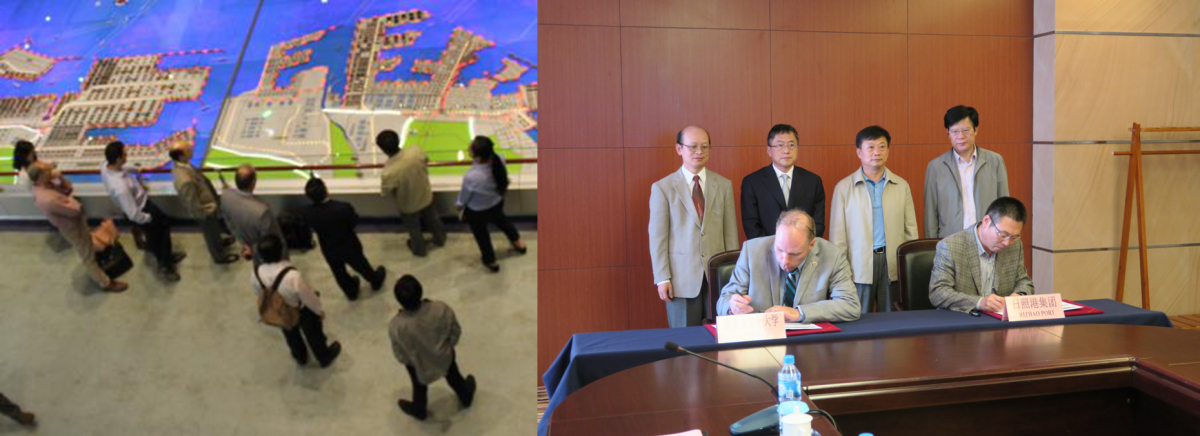
Rizhao Port Group Co Ltd
- Vice Chairman Kong Xianlei
- Xu Zhenhe Technology and Equipment Dept Manager but also talent collaboration plan with Universities and colleges
Rizhao Oceanic and Fisheries Bureau
- Zhu Jingyou Vice Director
- Qi Xin Environmental Protection Section Chief Officer
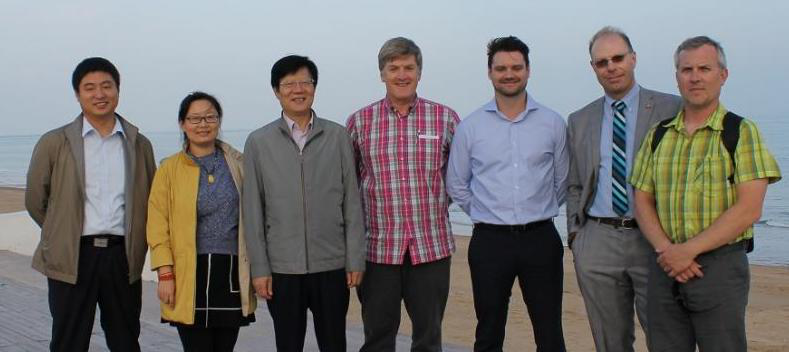
Sharing time at Rizhao: Dehai SONG (OUC), QI Xin (Rizhao Environmental Protection Section Chief), Zhu Jingyou (Vice Director Rizhao Oceanic and Fisheries Bureau), Stuart Pearson, Graeme Clark, Warwick Dawson, Richard Collins.
19 Oct TUPAH MEETING
A/Prof Xiao Hua Wang (UNSW) introduced the session describing this was the correct time for improving the research and knowledge of China’s coastline. Then Zhanwei Fan (Director of OUC Blue Economy Office) emphasized the importance of harbours and ports and looked forward to the workshop and other activities to providing a national framework for harbor and port research.
Summaries
In brief analyses each speaker provided a summary of port and harbour management in China:
- Pearl River estuary –
- Prof Jianping GAN HKUTS spoke about the dead zones caused by hypoxia in Hong Kong Harbour basal waters (DO <2mg/L) and the need for chemical, ecological and oceanographic collaborations and the need to understand whether Harnbour Area Treatment Scheme should be expanded.
- Jiaozhou Bay –Shengkang Liang, Lulu Qiao, Dehai Song, OUC spoke about Jiaozhou Bay and treatment options – the losses per annum are estimated to be CNY 333M
- Jiangsu coast – Yaping Wang, NJU provided an overview of the planned 1800km2 of reclamation planned by 2020, the massive windpower generation and invasive species Spartina alternifolia Yaping showed an excellent transdisciplinary understanding in the talk.
- Shanghai Port – Jianrong Zhu, SKLEC/ECNU spoke about the huge scale of port and port construction and reclamation. He observed that port capacity will not always increase and perhaps some of the proposed ports would not be built. He described the 12.5m depth of dredging
- Hangzhou Bay –Yeping Yuan, ZJU (Zeijang University, Zhoushan Island) gave an excellent and clearly illustrated presentation with great graphics and explanations of the residual flows using maps.
- Xiamen Bay –Keliang Chen, TIO rapidly covered the enormous work done in Xiamen and pointed out that house prices were an indicator of rising values as a result of restoration works. He mentioned that 70km2 of restoration cost $40M. Prof Jianping GAN said his hometown of Xiamen had a bad smell at low tide.
- Laizhou Bay – Bob You, Ludong University’s Centre for Ports and Coastal Disaster Mitigation spoke about the stability of the river mouth when the river is starved of sediment
- Green tides – Qianguo Xing, Yantai of Coastal Zone Research, CAS, qgxing@yic.ac.cn spoke about the green monster where in 2008 1Mt of algae cost 1B CNY to remove. Research suggests seaweed farmers on the Jiangsu Shoal discard algae that drifts to generate biomass of 23000 tonne/ha that can be detected by satellite (Xing & Hu 2016) and removed by skimmer
Also attending:
Haiyang WANG
Changjun YANG (Dongying)
Jainmin ZHOU (Qingdao Court)
Shuzong Han
Present international/Australian experiences in port and harbour management
- Darwin Harbour – Xiao Hua Wang, UNSW reported the development of a research understanding of Darwin harbor sediments and their management
- World Harbour Project – Peter Steinberg, CEO, Sydney Institute Marine Science introduced Australia Marine Science Plan (becoming more coastal focused) and the publications of Regional Studies in Marine Science. He described the sediment and water quality, multiple users, green engineering and urban coastal stewards projects
- Eco-engineering and Ecosystem Health in Ports, Graeme Clark, UNSW reported the estuary survey results on copper and other contaminants and biodiversity in impacted areas. Using oysters to bioaccumulate chemicals and show relationship between copper tolerance and invadability.
- Top-up learning from multiple users in World Harbours and contribute to ecological civilisations – Stuart Pearson, UNSW provided a call to arms for TUPAH to include economic, political, legal and environmental collaborations.
- Monitoring Algae Blooms on the NSW Coast and inland freshwaters using Multi-temporal Satellite Remote Sensing Technique, Linlin Ge, UNSW
- Coastal lowland acid sulphate soils and redox - Richard Collins, Water Research Consortium. UNSW showed the importance of metals in either reducing or oxidising contaminants and their potential in cleaning-up sites. He spoke about bioGEM group lead by David Waite, UNSW.
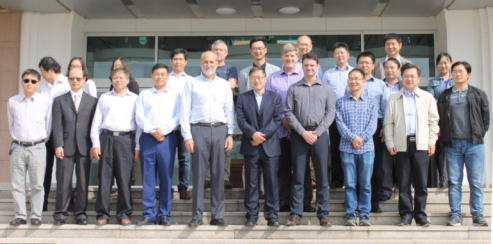
UNSW/TUPAH Delegation
- Professor John Arnold, Deputy Rector, UNSW Canberra
- A/Professor Xiao Hua Wang, Director, SARCCM
- Dr Richard Collins. UNSW, UNSW Water Research Consortium, Engineering Faculty
- Professor Matthew England, CCRC and ARCCSS, UNSW, TBC
- Professor Peter Steinberg, CEO, Sydney Institute of Marine Science
- A/Professor Linlin Ge, School of Civil & Environmental Engineering
- A/Professor Stuart Pearson, Deputy Director, SARCCM
- Dr Graeme Clark, Co-Director, the Applied Marine and Estuarine Ecology Group, UNSW
- Mr Warwick Dawson, Director, Research Strategy and Partnerships Office
UNSW Canberra Delegation:
- Professor Joseph Lai, Associate Dean International
- Professor David Lovell, Head of School of Humanities and Social Sciences
- Professor Warrick Lawson, Head of School of Physical, Environmental and Mathematical Sciences
- Professor Scott Tyo, Head of School of Engineering and Information Technology
- Dr Scott Sharpe, Deputy Head of School of Physical, Environmental and Mathematical Sciences (Education)

